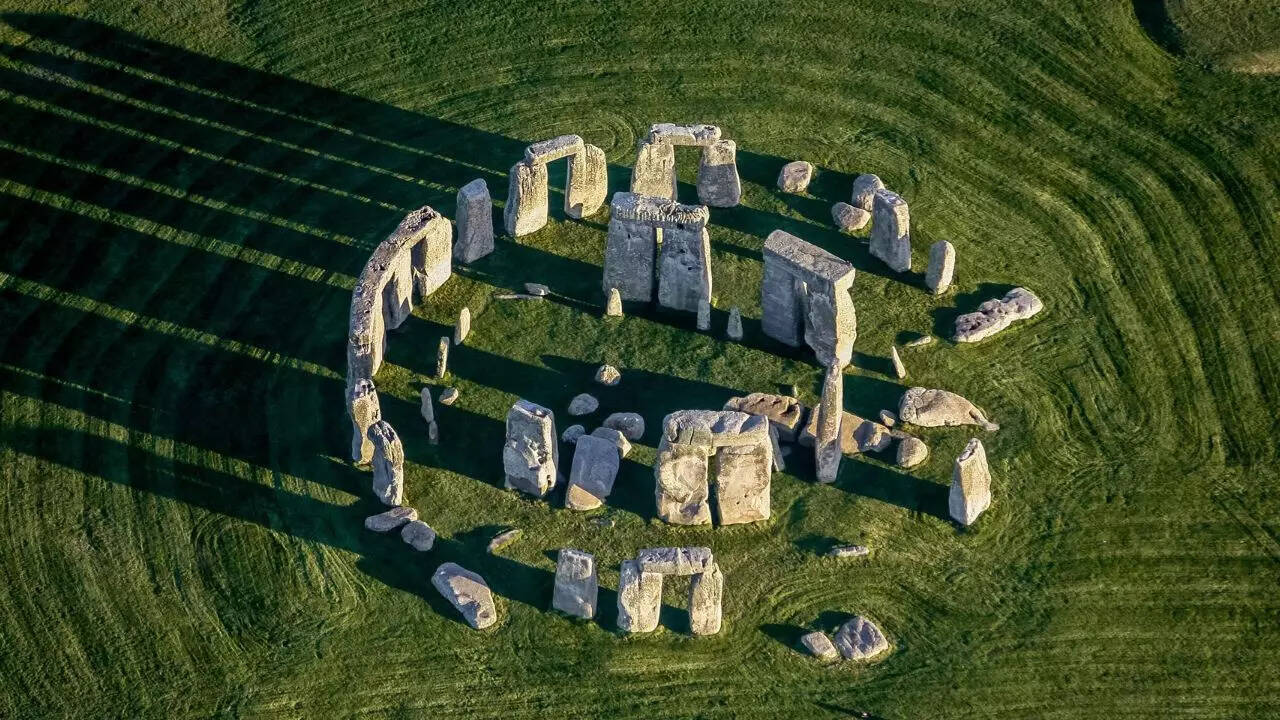A new scientific study has added weight to a long-held belief that the builders of Stonehenge, the iconic 5,000-year-old monument in southern England, transported its massive stones using only human effort and rudimentary tools. By analyzing a mysterious fragment known as the Newall Boulder, archaeologists have dismissed the theory that glaciers carried these stones to the Salisbury Plain during the Ice Age. Instead, they found geochemical and microscopic evidence linking the rocks directly to quarries in the Preseli Hills of Wales, over 200 kilometers away. This supports the argument that Neolithic people, with no access to wheels or metal tools, managed this incredible feat through ingenuity, endurance, and primitive but effective technology.
Stonehenge clues hidden in the Newall Boulder
The centerpiece of the new findings is a stone fragment unearthed at Stonehenge in 1924 and largely forgotten until recently. Called the Newall Boulder, this bullet-shaped piece was reanalyzed using advanced chemical and microscopic techniques. Researchers found that it shares identical mineral features with rhyolite rock found at Craig Rhos-y-felin in Wales. This connection effectively rules out glacial origin and aligns with the theory that the stone was manually extracted and transported by people.For decades, one camp of archaeologists believed the bluestones arrived at Stonehenge via glaciers during the Ice Age. Proponents like Dr. Brian John cited glacial abrasion marks as evidence. However, the latest study argues that these surface characteristics could easily be the result of weathering. More importantly, there’s no supporting evidence of glaciation on Salisbury Plain — no other glacial erratics or deposits have ever been found in the area. This significantly undermines the ice transport theory.

Theories behind why Stonehenge’s giant stones were arranged in a circle
The circular layout of Stonehenge has puzzled historians and archaeologists for centuries, giving rise to a number of compelling theories. One of the most widely supported ideas is that the monument functioned as an ancient astronomical observatory. Researchers have noted how certain stones align with the rising and setting sun during the summer and winter solstices. This suggests that Stonehenge may have served as a prehistoric calendar, helping early societies track the changing seasons for agricultural or ceremonial purposes.Another leading theory focuses on Stonehenge’s role as a sacred or spiritual site. The circular shape, often associated with unity, eternity, and the heavens, may have had symbolic significance to Neolithic communities. Some experts believe the site was used for rituals, burials, or ancestral worship, with the arrangement of the stones reflecting a cosmic order or serving as a portal between the earthly and the divine. While no single theory has been universally proven, the alignment, symmetry, and sheer scale of Stonehenge continue to point toward its importance as a center of cultural and spiritual life in ancient Britain.
Human ingenuity and Neolithic engineering
The idea that Neolithic people manually moved stones weighing 2 to 3 tonnes across 200 kilometers may sound implausible, but archaeologists say it’s entirely feasible. Evidence from other ancient cultures shows that large stones have been transported over great distances using wooden sledges, ropes, rollers, and teamwork. The larger “sarsen” stones at Stonehenge, some weighing up to 40 tonnes, were also moved into place, further proving that Neolithic communities had the capability to orchestrate such a massive undertaking.Stonehenge remains one of the world’s most iconic and enigmatic monuments. Understanding how its stones were transported gives us deeper insight into the lives, beliefs, and capabilities of Neolithic people. The latest findings strengthen the argument that the monument wasn’t the result of natural forces, but a powerful testament to human will and innovation — a message carved in stone across millennia.


